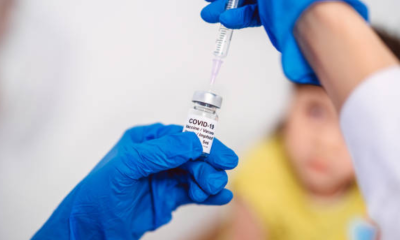Follow Us @
Learn how to identify symptoms
The growing number of dengue cases in Brazil has generated concern, with more than half a million probable cases recorded and an alarming increase compared to the previous year. Dengue hemorrhagic fever, a more serious form of the disease, is among the main challenges faced by health authorities. According to the Ministry of Health, immediate care and strict surveillance are needed to deal with this potentially fatal condition.
Identifying classic dengue hemorrhagic fever
The initial symptoms of classic dengue and the hemorrhagic form are similar, which can make early diagnosis difficult. However, between the third and seventh day of infection, specific warning signs begin to appear. A commonly used technique to distinguish severe dengue is the positive loop test, in which small red spots on the skin indicate signs of hemorrhage when the arm is tightened with a tourniquet. Other symptoms to watch out for include spontaneous bleeding in different parts of the body (mouth, nose, gums, ears or intestine), severe abdominal pain, nausea, persistent vomiting, neurological manifestations and heart failure.

Comparison of symptoms of types of dengue fever (Photo: reproduction/ViverNursingem/Intensive Care)
Risks and complications of dengue hemorrhagic fever
Although severe dengue fever is considered rare, its complications can be devastating and even fatal. The state of circulatory shock, characterized by a sudden drop in blood pressure and multiple organ failure, is the main cause of death associated with dengue hemorrhagic fever. Excessive loss of fluids and blood due to internal bleeding can further worsen the patient's clinical condition, requiring urgent medical intervention.
Dengue prevention and control
Controlling the vector, the Aedes aegypti mosquito, is essential in the fight against dengue. The elimination of stagnant water breeding sites, where the mosquito lays its eggs, is an effective strategy to reduce the transmission of the disease. Furthermore, individual measures, such as the use of repellents and vaccination, play a crucial role in preventing dengue infection. Vaccination, available in the SUS for certain population groups and in the private sector for a wider age range, offers an additional layer of protection against the disease.
Dengue fever remains a public health challenge in Brazil, requiring a comprehensive approach that includes active surveillance, vector control measures and public awareness of the importance of prevention. O.
Featured Photo: person showing symptoms of dengue hemorrhagic fever (Reproduction/EdiçãoBrasil)
Learn how to identify symptoms
Follow AFRILATEST on Google News and receive alerts for the main news about celebrities, soap operas, series, entertainment and more!
SHARE POST AND EARN REWARDS:
Join our Audience reward campaign and make money reading articles, shares, likes and comment >> Join reward Program
FIRST TIME REACTIONS:
Be the first to leave us a comment, down the comment section. click allow to follow this topic and get firsthand daily updates.
JOIN US ON OUR SOCIAL MEDIA: << FACEBOOK >> | << WHATSAPP >> | << TELEGRAM >> | << TWITTER >
#Learn #identify #symptoms
-

 Fashion3 months ago
Fashion3 months agoVogue Arabia cover welcomes Salma Hayek in an interview with Penélope Cruz
-

 Football3 months ago
Football3 months agoVAR points out Diego Costa's offense against the fourth referee
-

 USA today entertainment3 months ago
USA today entertainment3 months agoBeyonce with the single “Break My Soul” leads on Spotify Brazil
-

 Health and Fitness3 months ago
Health and Fitness3 months agoVaccine against the reappearance of skin cancer enters final testing phase
-

 USA today entertainment3 months ago
USA today entertainment3 months agoSZA, Future and DJ Khaled come together in collaboration
-

 News3 months ago
News3 months agoParents of former player Waleswska are pressured by widower to pay rent for the house where they live
-

 USA today entertainment3 months ago
USA today entertainment3 months agoLarissa Luz and Linn da Quebrada enchant at the Multishow Awards with a tribute to Elza Soares.
-

 Good News TV series3 months ago
Good News TV series3 months agoThe shocking reason behind the decision not to show dead characters in The Last Of Us episode revealed














































